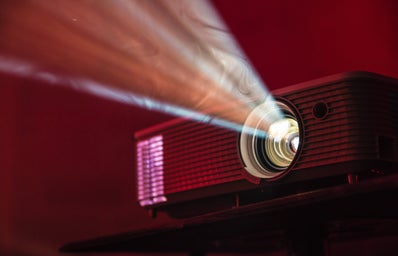As kids, many of us grew up watching Disney movies, and if you’re like me, your love for them continues to this day.
Many times, kids favor characters who look like them. Being Filipina-American and watching Disney, I loved characters like Mulan and Lilo because they looked like me. When I was little, I understood that I was Asian, and going to school and hearing the stereotype that “all Asians are Chinese” made me believe that I was Chinese. As a result, I looked up to Mulan because I knew that she was Chinese, and she was the only Asian Disney princess, but she didn’t look like me.
Lilo looked the most like me, but, culturally, we were very different because she was Hawaiian, not Filipino or Asian. As a result, I didn’t have many Filipino – let alone Southeast Asian – role models in Disney or traditional Hollywood films, and I accepted that seeing people who looked like me on my TV was not the norm.
Fast forward to August 2018 with the release of “Crazy Rich Asians,” I finally got to see a blockbuster movie with a majority Asian cast produced by a majority Asian crew, and I remember crying in the movie theater while the credits rolled. I felt so overwhelmed because that was the first time I felt like Hollywood took steps toward Asian representation. For one of the first times, Hollywood acknowledged that it had no excuse to tell Asian-based stories without Asian actors and producers.
When I found out that Disney was going to produce a live-action version of “Mulan,” I was ecstatic because, instead of westernizing the story, they wanted to make a version that was more accurate to the Chinese ballad.
The first time I saw the trailer, I cried.
I cried because I felt as if Hollywood– specifically Disney, a major movie franchise– was taking another step toward more Asian representation in films. However, when the movie came out, I was rudely shoved back into reality because I learned more about the surface-level representation that the film portrayed.
Although the whole cast was Asian, many of the minds behind the camera weren’t. Because Disney saw the success of “Crazy Rich Asians” and deduced that many people would flock to theaters because of the Asian representation alone, the company gave it to us half-heartedly.
When I heard the news about “Raya and the Last Dragon,” I was so excited because, for the first time, we would have a Southeast Asian Disney role model. Although there wasn’t much official news at the time, I casually followed updates on the project. Then, once I learned about the controversies that followed “Mulan,” I immediately crossed my fingers and hoped that “Raya” would be different. As I learned more about the film, I began to think that as of right now, “Raya” is the Southeast Asian representation we have all been waiting for.
Written by Malaysian-born Adele Lim and Vietnamese-American Qui Nguyen, “Raya and the Last Dragon” follows the tale of Raya, the daughter of the Chief of Heart Lands, in the fictional world Kumandra. To restore peace to the land, Raya must find the last dragon to stop the evil forces known as Druun.
From the official teaser trailer, Disney depicts Raya as fearless, highly skilled in martial arts and adventurous. Throughout the trailer, we see numerous Southeast Asian influences in movie details like her clothing, the architecture and the different tribes.
To make a proper homage to the cultures that inspired this film, Disney employed several teams to research the cultures through a personal lens. Filmmakers visited numerous Southeast Asian countries for research, including Cambodia, Laos, Thailand, Vietnam, Singapore, Indonesia and the Philippines. As part of their creative process, they partook in several martial arts and gamelan instrument lessons.
Seeing the movie’s promotional poster and teaser trailer, you can pick out some of the influences. However, no member of the project officially confirmed these influences, so these are just speculations from my own observation and research.
In the trailer, we see Raya use what appears like two reed sticks, representing the bastons used in traditional Arnis martial arts. Arnis, also known as escrima and Kalis, is the national martial art of the Philippines, and it is considered the martial art of Lapu Lapu, who was a major national Filipino hero that fought against Spanish colonization. Although bastons are a common weapon, Arnis implements other weapons like knives and daggers and uses the weapons as an extension of the body.
Another Southeast Asian-inspired element we see in “Raya’s” promotional poster and official character design is the dragon Sisu. Although it is easy to confuse her with the East Asian dragon, she more closely resembles the Naga, a mythological being throughout numerous Southeast Asian cultures. In Hinduism, Buddhism and Jainism, the Naga is a handsome, semidivine being that is half human and half cobra and can assume either form. Specifically, in many Buddhist temples in countries like Thailand, they are serpent-like creatures with prominent horns that guard temple doors. They are also the protector of deities; in many statues, the Naga guard deities like the Buddha.
In Laos, they are said to be water serpents that live in the Mekong River, but their Thai neighbors believe that the Naga is a wealthy underworld deity that inhabits the same river. Another depiction of the Naga is in a Cambodian myth that states that the Naga was a race of reptilian beings that had a large empire neighboring Cambodia in the Pacific Ocean. The myth said that when the king’s daughter, Queen Soma, married the Indian Brahmin Kaundinya, their unity was the origin of the Cambodian people.
When Disney released the teaser trailer for “Raya and the Last Dragon,” the majority of netizens on Twitter were ecstatic to finally see a Southeast Asian Disney princess, claiming that this is the representation that we have waited so long for.
However, many were also quick to criticize the film.
One issue that many people have with it is the amount of time that it took Disney to produce a Southeast Asian-inspired film.
Another issue that others have pointed out is “Raya’s” similarity to other large franchises like Avatar the Last Airbender, The Legend of Korra, and the “Star Wars” franchise. If you browse the trailer’s comment section, it doesn’t take long to find comments comparing “Raya” to Avatar universe characters like Katara and Korra or one of the film’s locations in a desert-like setting to the “Star Wars” planet Jakku.
Regardless of these criticisms, I’m excited to finally see a Southeast Asian heroine in a major Disney movie. Hopefully, “Raya” will be the first step toward giving Southeast Asians, young and old, a role model that truly represents them.



